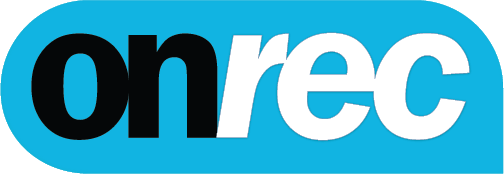Engagement and productivity also need a good first few weeks in the job to guarantee retention. Nonetheless, a lot of onboarding programs remain exhaustive, fragmented, or distant. Organizations are finding solutions to this by increasingly adopting user experience (UX) design principles to develop onboarding experiences, which seem natural, friendly, and meaningful. UX design can be used to approach onboarding to ensure that HR teams can move beyond checklists and instead design in a smooth and human-friendly experience to all new recruits.
UX design aims at ensuring that systems and experiences can be navigated easily with the primary focus on the needs of the user. Applying them to the hiring environment means that the onboarding is not only cost-effective, but also semantically productive. An effective onboarding maximizes on what is going through the mind of the new hire, what they are required to know, and how they respond to the systems and culture of the company. As the UX designers observe the users to streamline the websites and apps, HR specialists can also observe the new employees to create the superior first-day and first-week experience.
Understanding the Employee Journey
Understanding the employee journey is essential to improving onboarding. UX design promotes plotting user journeys and in this case, it refers to sourcing out all the procedures that a new worker will undergo-before their first day, a period of orientation and the initial weeks. The described journey map can assist employers in the discovery of pain points, redundancies, and possibilities to engage in a better way. To give a specific example, if new employees always get lost with learning IT installation or scrambling under the problem of HR paperwork, then the journey map will show which part should be aided and de-cluttered.
Such mapping is also consistent, which is a big pain-point in most traditional onboarding programs. When the process of onboarding is left at the mercy of individual managers or departments, new employees may endure very diverse experiences. Standardizing touchpoints with UX tools offers companies a unique opportunity to provide all the workers at the beginning of the journey with a sense of clarity and support, such as the welcome email, digital portal, or training modules. This will give a fairer and more official entry into the company.
Designing with Empathy
The other aspect of UX design that becomes useful when it comes to onboarding is designing with empathy. Empathy-driven design implies comprehending how a new employee may feel, uncertain, curious, nervous, etc., and designing experiences to allow the respective emotions to be answered with reassurance and guidance. As an example, just a walkthrough video tour of the first day can go a long way to quelling nerves. The digital onboarding software would be no exception in that a comprehensible language, good images, and informal structure would go a long way. These characteristics make newcomers feel valued and looked after, and not thrown into a system which they have to get to grips within their own sweet time.
Communication plays a central role in this process. An individual who has studied communications and has a communications degree is usually familiar with the importance of tone, messaging and structure on the conveyance of information. Applying the knowledge of communication as well as UX practices, HR departments will be able to design the messages that will be not only clear and concise, but also in line with organizational values and culture. This goes all the way to the wording of instructions to the tones of the welcome material and internal branding of systems. These components strengthen the overall emotional and psychological on boarding of the employee and not simply the administrative on boarding when done right.
Reducing Complexity in the Process
Onboarding is not just a collection of forms and introductions, it is moving into a different community. UX design encourages the concept of a development of an ecosystem that is coherent, friendly and easy to maneuver. It implies decreased cognitive load and the risk of information overload during the first few days. When filtering the information employees should see is what employees really need, when they need it, knowledge retention increases and also having a general feel of where to go. It also does not waste time or mental capabilities of new employees, particularly with hybrid or remote environments, where self-navigation is essential.
The other key principle of UX design that onboarding would enjoy is iterative improvement. Instead of waiting a year to review a given program, HR teams can obtain real time information on the views of new recruits on various materials or processes and then make changes to them on the spot. As a team of product developers will tweak an app using customer feedback, HR can approach onboarding as a living process that becomes better and better with every cohort. The strategy will build the culture of responsiveness and openness so that new employees will feel that their voices count since the first day of employment.
Aligning Onboarding with Employee Expectations
In such a saturated job market, it is now expected that the first moments of internship establish an understanding of how a business views its employees and their experience in the workplace. Employees are becoming more keen on finding employers who are considerate, nice and technologically sound. UX design provides a guide on how to achieve that sort of experience, primarily when juxtaposed with robust communication strategies. Organizations should consider using both practical design tools and people-first attitude to turn the process of onboarding into an effective retention and satisfaction tool.
Making investments in onboarding via UX design does not mean focusing on the aesthetics or productivity of onboarding processes, but rather it is about making companies treat their people in a more human way. Having been in a position where an employee feels supported, understood, and secure during the first days and weeks helps such an employee to be more likely to grow with time into a loyal and productive member of the workforce. To make workplaces successful in the modern world, it will become essential to implement the principles of UX in HR and recruit people with a wide range of skills, including those provided by the team holding a degree in communications.






